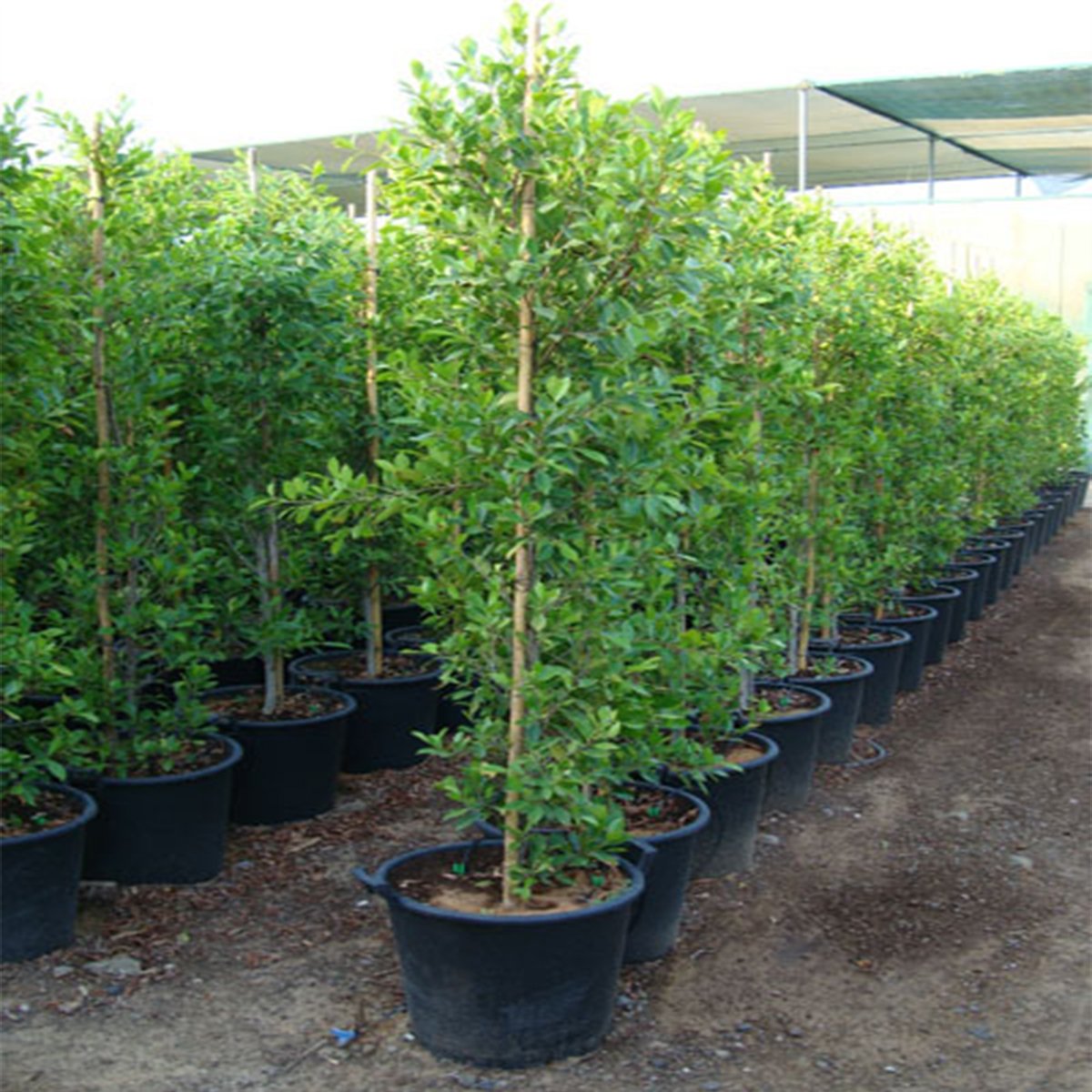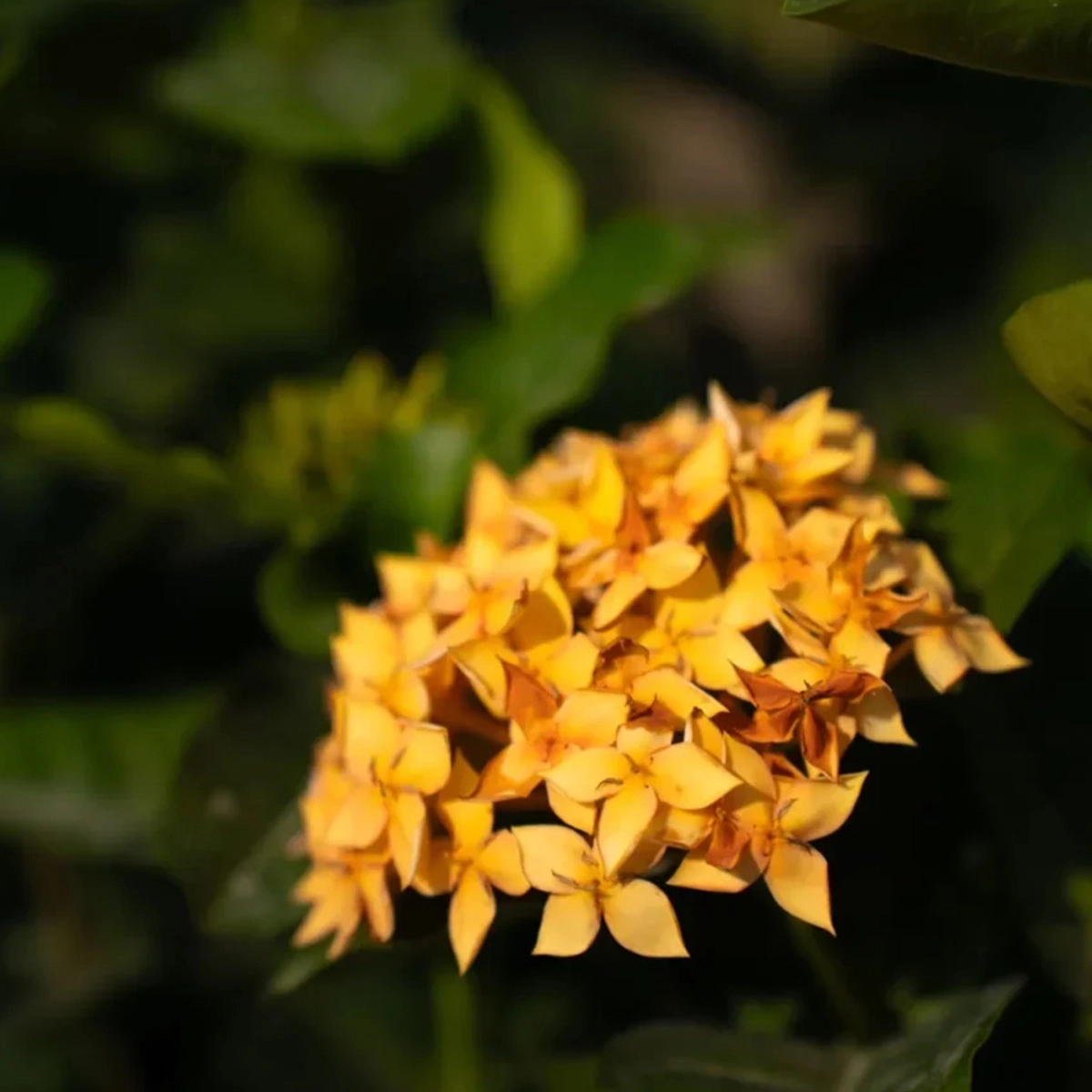Ficus nitida, commonly known as Indian Laurel Fig or Retama Fig, is an evergreen tree belonging to the Moraceae family. It is native to parts of Asia and Australia and has become a popular ornamental tree in various regions around the world, including the United States and Mediterranean countries. Ficus nitida is valued for its dense foliage, rapid growth, and versatility, making it a favored choice for both urban and rural landscapes.
Landscape Use:
Ficus nitida is a popular choice for hedges, screens, and privacy barriers due to its dense foliage and rapid growth.
It is commonly used for urban landscaping, as it can withstand air pollution and urban stresses, making it suitable for street plantings and urban green spaces.
The tree’s broad and spreading canopy makes it an excellent shade tree for parks, large gardens, and outdoor recreational areas.
Overall, Ficus nitida is an impressive and adaptable tree, with its dense, glossy foliage and broad canopy. Its ability to thrive in various environmental conditions and its aesthetic appeal make it a favored choice for landscape designers and homeowners looking to create green and inviting outdoor spaces.
Below is a detailed description of Ficus nitida:
Plant Characteristics:
Size: Ficus nitida is a medium to large-sized tree that can grow to impressive heights. In optimal conditions, it can reach up to 50 to 60 feet (15 to 18 meters) tall with a spread of 30 to 50 feet (9 to 15 meters).
Leaves: The leaves of Ficus nitida are leathery, glossy, and dark green. They are alternate, ovate to elliptical in shape, and have prominent veins. The leaves are typically 2 to 5 inches (5 to 12 cm) long and arranged in a dense, symmetrical pattern along the branches.
Growth Habit: Ficus nitida has a dense and bushy growth habit, with a rounded canopy. The branches are sturdy and tend to grow horizontally, giving the tree a broad and spreading appearance.
Roots: Like many Ficus species, Ficus nitida can develop aerial roots, especially in outdoor conditions.
Flowers and Fruits: Ficus nitida is not primarily grown for its flowers or fruits. In outdoor settings, the tree may produce small, inconspicuous flowers followed by small, spherical fig-like fruits that are not typically consumed.
Cultural Requirements:
Sunlight: Ficus nitida thrives in full sun to partial shade. It prefers bright, indirect light but can tolerate some shade.
Temperature: It is well-suited to warm and tropical climates, where temperatures stay above 50°F (10°C). It is not frost-tolerant and may suffer damage or die back in freezing temperatures.
Soil: The tree prefers well-draining, fertile soil but can adapt to a range of soil types, including sandy and clay soils.
Watering: Ficus nitida prefers regular watering to keep the soil consistently moist but not waterlogged. It can tolerate brief periods of drought once established.
Pruning: Regular pruning is often necessary to maintain the desired shape and size, as Ficus nitida has a vigorous growth rate and can become quite large if left unattended.






Reviews
There are no reviews yet.